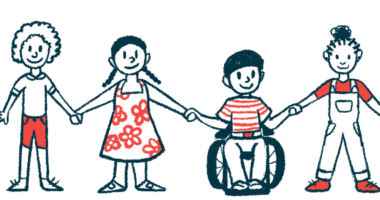Surprising data found in study on Cushing’s disease in children
Unlike in adults, disorder is more common in boys than girls pre-puberty

More boys were diagnosed with Cushing’s disease before puberty than were girls, according to an examination of medical records of children and adolescent patients across Turkey.
These findings contrast with observations made in adults, in whom women are diagnosed with Cushing’s far more often than men.
The researchers noted, however, that symptoms of Cushing’s in children, such as weight gain, facial changes, and/or lack of growth, are not specific to this disorder and can overlap with those of other conditions. Moreover, they found that MRI scans failed to detect about a third of benign pituitary tumors, the underlying cause of Cushing’s disease, in children — a lower detection rate than that generally seen in adults.
“Our findings highlight that presenting complaints may be subtle in children,” the team wrote, noting that “the sensitivities of the diagnostic tests are very variable and require a careful interpretation.”
The study, “Clinical features, diagnosis and treatment outcomes of Cushing’s disease in children: A multicenter study,” was published in the journal Clinical Endocrinology.
Team finds ‘significant difference’ in diagnoses pre- and post-puberty
Cushing’s disease is marked by elevated levels of cortisol in the body, known as hypercortisolism. Benign tumors in the brain’s pituitary gland produce and release abnormally high amounts of the signaling molecule adrenocorticotropic hormone, or ACTH, which stimulates the adrenal glands to overproduce cortisol.
While the disease typically develops in adults between the ages of 20 and 50, rare cases have been reported in children and adolescents. As a result, diagnosing Cushing’s in and prescribing appropriate treatments for these pediatric patients can be challenging, and are typically based on adult recommendations.
The goal of this study, carried out by researchers at several clinical sites across Turkey, was “to share the clinical, diagnostic and therapeutic features of the patients diagnosed with [Cushing’s disease] in childhood.”
To that end, the team examined the medical records of 34 children — 16 boys and 18 girls — diagnosed with Cushing’s disease. These children and teenagers ranged in age from 4.3 to 17.8 years at the time they were admitted to a treatment center.
Among them, five were classified as having a normal body weight, nine were overweight, 14 had obesity, and six had severe obesity. Eight females were menstruating, with six reporting irregular cycles.
A total of 10 boys and five girls were diagnosed before puberty, and six boys and 13 girls after puberty. This was a “significant difference in gender distribution” pre- and post-puberty, the researchers noted.
Moreover, it is a “feature distinguishing paediatric [Cushing’s disease] from adult cases,” the team wrote.
“This difference in gender distribution remains unexplained,” they added.
Clinicians must use care to diagnosis Cushing’s disease in children
Patients mostly complained about rapid weight gain, short stature, and red and swollen cheeks. Physical examinations revealed the presence of typical Cushing’s features, including a round face, sometimes called a moon face, a fat pad behind the shoulders, known as a buffalo hump, and obesity. In the 31 patients examined, 14 (45.1%) had high blood pressure.
“Facial changes and weight gain have also been reported to be more frequent in children with [Cushing’s disease] than in adults,” the researchers wrote.
Suspecting hypercortisolism in these children, the clinicians ordered standard diagnostic tests. These included measuring early morning blood cortisol and ACTH levels, late‐night blood cortisol levels, 24‐hour urinary free cortisol (UFC) levels, and conducting overnight or low‐dose dexamethasone suppression tests (DSTs).
Late‐night blood cortisol levels were elevated in all evaluated patients, and early morning blood cortisol levels failed to drop after an overnight DST in all but one of the tested patients. Tests measuring late‐night blood cortisol levels had 100% sensitivity, meaning they were able to correctly identify patients with hypercortisolism in all cases, while low-dose DST had a sensitivity of 94.4%.
The presence of Cushing’s disease was confirmed using the corticotropin‐releasing hormone (CRH) stimulation test, which had a sensitivity of 100%. Measuring morning blood ACTH levels also had a high sensitivity of 96.8% at identifying Cushing’s disease.
MRI scans detected pituitary tumors in 24 patients (70.5%). In two patients, tumors were only found after a second round of MRI scans.
Researchers explained that the poor visualization rate was “due to the limited spatial resolution of MRI, that is, a small lesion in a small gland is less conspicuous.” They also added that “it is crucial to acknowledge that the effectiveness of MRI in detecting [tumors] in paediatric [Cushing’s disease] is lower compared to adults.”
An invasive test called BIPSS, for bilateral inferior petrosal sinus sampling — used to confirm excess ACTH production originating in the pituitary gland — was performed in 16 cases.
Cushing’s disease was confirmed in 13 patients (81.2%) before CRH stimulation, and in 14 (87.5%) after that test.
Children with [Cushing’s disease] may present with complaints such as weight gain or growth failure which are not specific to the disease. The sensitivities of the tests used in the diagnosis of [Cushing’s] are very variable, and diagnosis requires a careful investigation.
Surgical removal of pituitary tumors was the first line of treatment for 30 of the 32 patients with available data; the remaining two patients were treated with radiotherapy. None of the patients underwent adrenal surgery.
Starting on the day of surgery, 18 patients received hydrocortisone replacement therapy. That treatment was tapered and then discontinued in 16 of them after a median of 22 weeks, or about four months. After about three years, the disease returned in two patients (6.6%), and surgical failure was reported in five cases (16.6%).
Over a follow-up period ranging from five to 8.5 years (102 months), the mean height across all patients significantly increased, although it was still below the standard height per age range. The mean body mass index or BMI, a ratio of weight to height, and fat content significantly decreased during follow-up. Nevertheless, one-third of the patients were still considered obese.
“Children with [Cushing’s disease] may present with complaints such as weight gain or growth failure which are not specific to the disease,” the researchers wrote. “The sensitivities of the tests used in the diagnosis of [Cushing’s] are very variable, and diagnosis requires a careful investigation.”
Further, the team noted that “clinicians should be careful in terms of the recurrence of the disease during the follow-up after surgery.”








